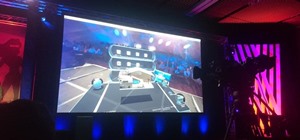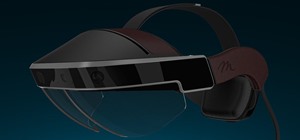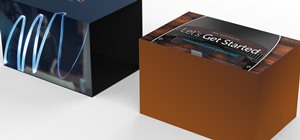Despite funding difficulties that forced Meta to place employees on temporary leave in September, the augmented reality headset maker is reminding enterprise companies that it remains a viable option for visualizing and working with 3D design models.
Earlier this month, Amar Abdelli, a senior systems administrator at Meta, published a video of four testimonials from Meta 2 users who have benefited from Meta Viewer, the app that enables designers and decision-makers to view 3D CAD models in augmented reality while collaborating with a colleague remotely.

One user, power tool maker Stanley Black and Decker, has harnessed the Meta 2 and Meta Viewer to save time when it comes to sharing 3D virtual models of products instead of preparing physical models.
- Don't Miss: Hands-On: Meta's New Meta Viewer App Is the AR Collaboration Tool All Those Sci-Fi Films Imagined
"Our team, we are storytellers, we need to be able to articulate a vision to our customers and oftentimes that vision is something that no one has ever seen before," said Harry Zhong, technical lead at Stanley Black and Decker. "What's really cool about what Meta is doing is they are shortcutting the process of taking a CAD model into a VR or AR-ready model."

Another user, who is accustomed to working with the SolidWorks 3D CAD software, which Meta began to support in February, has found the Meta 2 computing environment to be the superior method for product design.
"I thought the learning curve on using the interface was very fast. It's very good at communicating the product ideas," said Elise Moss, a senior mechanical engineer working in Silicon Valley. "Having this would cut down your product design cycle time."

Meanwhile, at Thermo Fisher Scientific, a company dealing in scientific equipment ranging from $10,000 to half a million dollars or more per device, Meta 2 makes it easier to train sales teams in remote locations on equipment and conduct demos for potential customers.
"I think that the graphical capabilities of Meta is unprecedented. This is at least as good if not better than what you see in virtual reality; besides it's in your natural state," said Jakrey Myers, asenior digital project manager at Thermo Fisher Scientific. "Approximately 20% of all demos that need to be conducted could be supplanted by a physical/virtual combination — instant sale if that happens."

Finally, at Soundbrenner, makers of wearable devices for musicians, the company claims that the Meta 2 has facilitated better collaboration between the company's corporate headquarters in Hong Kong, its industrial designers in Tokyo, the mechanical designers in Utah, and an additional office in Berlin.
"We're pretty much as international as you can be, and it's always a pain to understand like when someone comes up with a new design proposal. There's a new CAD file and we have to figure out what exactly was changed and then being able to just see that and manipulate it, that's just incredible," said Florian Simmendinger, CEO and founder of Soundbrenner, makers of wearable devices for musicians.
"So, to me, the key here is that I don't even have to understand SolidWorks. I can just put on the headset and get started right away, so that's what really creates value."
In a year when Magic Leap finally delivered its own augmented reality headset and continues to woo developers, and Microsoft prepares to unveil its second-generation HoloLens while pursuing enterprise and government customers, the much smaller Meta is nevertheless continuing to compete against the bigger players.
After making the Meta 2 available for sale through Dell in February, Meta is showing that the PC-tethered augmented reality headset, which costs less than both the HoloLens and the Magic Leap One, is a legitimate enterprise option for design and engineering functions.
Just updated your iPhone to iOS 18? You'll find a ton of hot new features for some of your most-used Apple apps. Dive in and see for yourself:

























Be the First to Comment
Share Your Thoughts